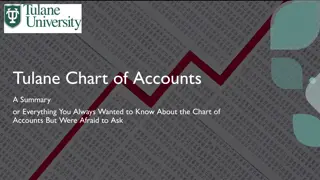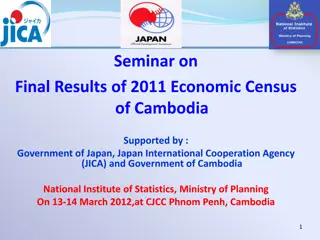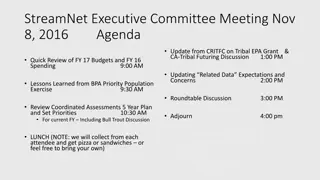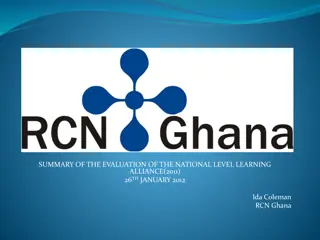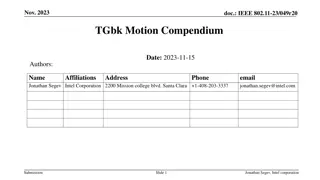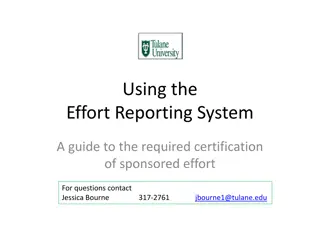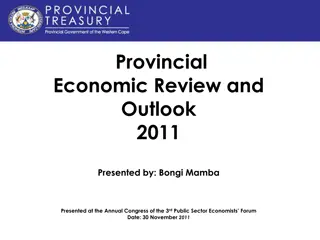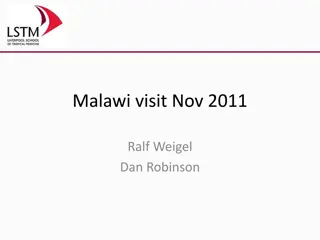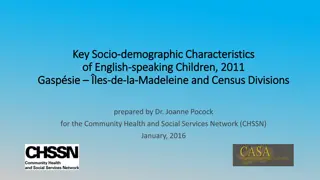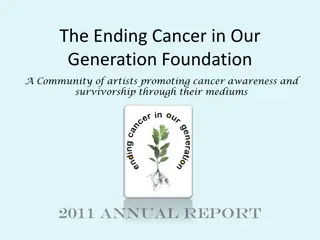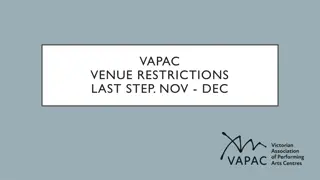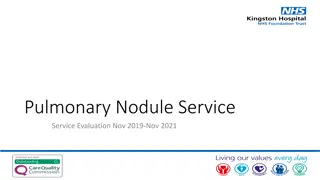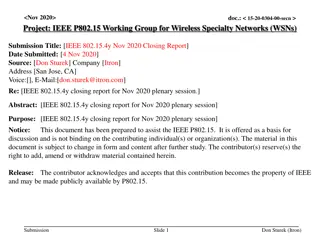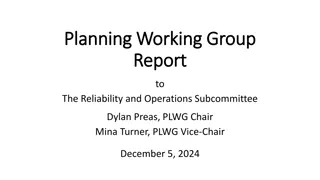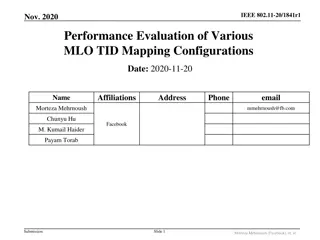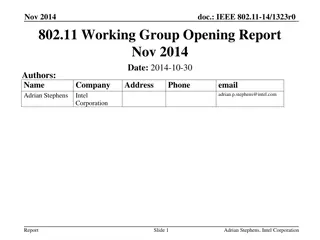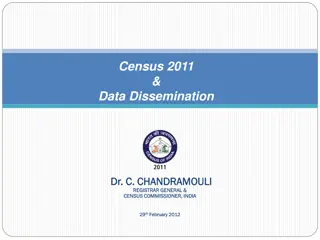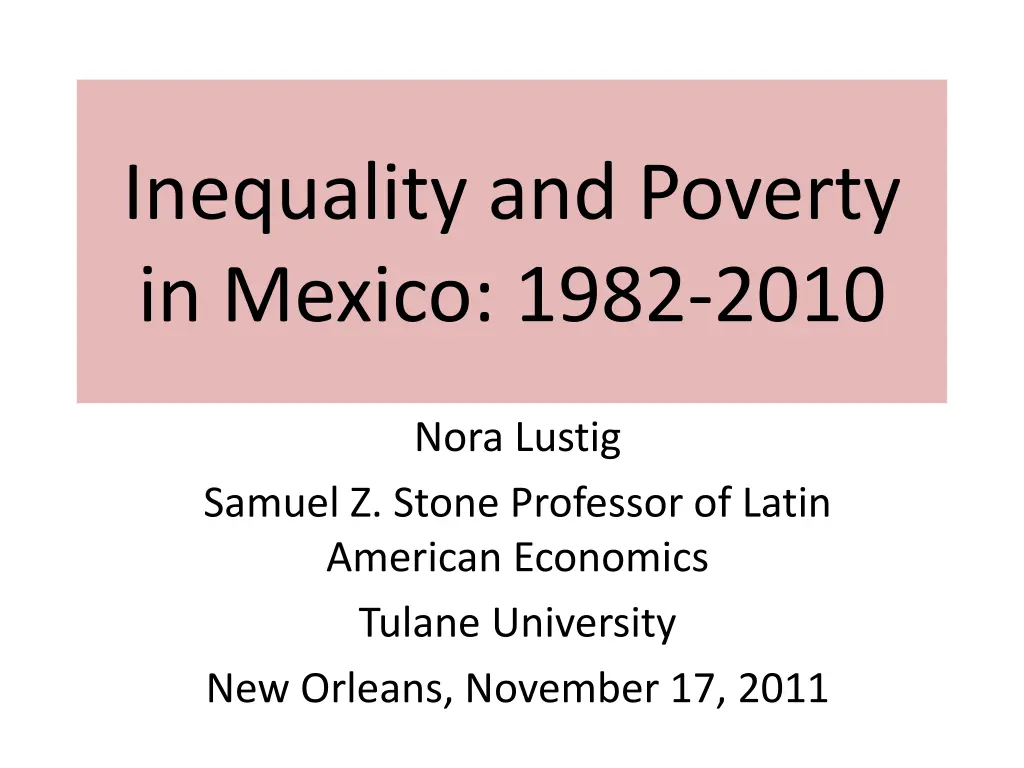
Inequality and Poverty Trends in Mexico 1982-2010
Explore the trajectory of inequality and poverty in Mexico from 1982 to 2010, highlighting distinct phases such as the debt crisis, policy impacts, and the effects of NAFTA. Understand how different policies and economic events influenced poverty rates and income disparities in the country.
Download Presentation

Please find below an Image/Link to download the presentation.
The content on the website is provided AS IS for your information and personal use only. It may not be sold, licensed, or shared on other websites without obtaining consent from the author. If you encounter any issues during the download, it is possible that the publisher has removed the file from their server.
You are allowed to download the files provided on this website for personal or commercial use, subject to the condition that they are used lawfully. All files are the property of their respective owners.
The content on the website is provided AS IS for your information and personal use only. It may not be sold, licensed, or shared on other websites without obtaining consent from the author.
E N D
Presentation Transcript
Inequality and Poverty in Mexico: 1982-2010 Nora Lustig Samuel Z. Stone Professor of Latin American Economics Tulane University New Orleans, November 17, 2011
Inequality and Poverty Trends Two distinct phases: 1982-1994 - Debt crisis and structural reforms: inequality and poverty rose. 1994-2006 - Post-NAFTA, economic crisis, recovery and slow-growth: inequality and poverty declined. More recently 2006-2010 - Great Recession: poverty rose and the decline in inequality lost steam. Sources: Lustig (2010), Campos, Esquivel and Lustig (2011, in progress)
Inequality (Gini) and Poverty (Headcount): 1984-1992 Panel A: 1984-1992 18 54 17 52 16 50 15 Gini 48 14 Pobreza Extrema (%) 46 13 44 12 1984 1989 1992 Gini Coefficient Gini (Lustig y Szekely, 1997b) Pobreza extrema (Lustig y Szekely, 1997a) Headcount Ratio
Rise in Poverty: Debt Crisis or Policy? Debt crisis would have caused an increase in poverty no matter what. However: Evidence of overadjustment: fiscal policy more contractionary than required to restore macroeconomic balance. Brunt of adjustment was placed on Mexico; no haircuts for creditors until ten years later. Fiscal cuts did not protect spending on the poor. Elimination of general subsidies on staples and dismantling of agricultural support schemes were not replaced by compensatory programs => Policies exacerbated the impact of debt crisis on poverty.
Slight Decline in Poverty in the Early 1990s: Did Policy Help? Poverty declined slightly nationally, but rose in rural areas and the South and Southeast. Coincided with rural uprisings and revolts; Zapatista uprising the most salient. PRONASOL Salinas administration flagship anti- poverty program focused on building infrastructure in rural communities. But no safety nets to deal with sharp fall in international coffee prices and dismantling of price support and subsidies in agriculture. => Policy did not help.
Inequality (Gini) and Poverty (Headcount): 1984-1992 Panel A: 1984-1992 18 54 17 52 16 50 15 Gini 48 14 Pobreza Extrema (%) 46 13 44 12 1984 1989 1992 Gini Coefficient Gini (Lustig y Szekely, 1997b) Pobreza extrema (Lustig y Szekely, 1997a) Headcount Ratio
Rise in Inequality: 1980s and Early 1990s Market Forces or Policy? Unequalizing effect of increase in skilled/unskilled wage gap: Between 1984 and 1995, real wages for skilled workers rose by around 8 percent and unskilled wages decreased by around 22 percent. Increase in wage gap (skill premium) was linked to: Trade liberalization and other factors which shifted labor demand towards workers with higher skills. Reduction in real minimum wages and weaker unions. => Policy contributed to increase in earnings--and hence overall--inequality.
Decomposition of Differences in the Distribution of Earnings: 1989-1994 1 .7 Log wage effects .4 .1 Returns (Wage gap) -.2 -.5 0 5 10 15 20 25 30 35 40 45 50 55 60 65 70 75 80 85 90 95 100 Quantile Total differential Effects of Returns Effects of Characteristics
Wage distribution with respect to median: 1989 and 2010 200 Real Minimum Wage 2010=100 Real Minimum Wage (December 2010=100) 180 160 140 120 100 1988m1 1992m1 1996m1 2000m1 Year 2004m1 2008m1 2010m12
Unionization Rate .2 .18 Unionization Rate .16 .14 .12 .1 1988 1990 1992 1994 1996 1998 2000 2002 2004 2006 2008 2010 Year ENIGH ENOE
Decline in Inequality: 1994/96-2006 Market Forces or Policy? Labor earnings, government transfers and remittances have been equalizing. Labor earnings have been equalizing because skilled/unskilled wage gap decline. Decline in wage gap linked to rise in relative supply of skilled workers. Real minimum wages remained constant; irrelevant to earnings inequality trends. With launching of CCT Progresa/Oportunidades, government transfers became more progressive.
Decomposition of Differences in the Distribution of Earnings: 1994-2006 Returns (Wages gap)
Decline in Inequality Loses Steam: 2006-2010 New Trend or Great Recession? Too early to tell. But, could be the result of slowing down of educational upgrading; barriers to tertiary education access due to low quality of basic education and opportunity cost of not working
Decomposition of Differences in the Distribution of Earnings: 2006 - 2010 1 Returns (Wage Gap) .7 Log wage effects .4 .1 -.2 -.5 0 5 10 15 20 25 30 35 40 45 50 55 60 65 70 75 80 85 90 95 100 Quantile Total differential Effects of Returns Effects of Characteristics
Government Transfers: Change in Gini (Mexico 2008; in %) 6.0 4.0 2.0 0.0 % change wrt market income Effectiveness Indicator Argentina -2.0 Brazil Mexico Peru -4.0 Bolivia -6.0 -8.0 -10.0 -12.0 21
Government Transfers: Change in Headcount Ratio (Mexico 2008; in %) 60.0 40.0 20.0 Argentina 0.0 Mexico % change wrt net market income Effectiveness Indicator % change wrt net market income Effectiveness Indicator Brazil Bolivia -20.0 Peru -40.0 -60.0 Headcount Index ($ 2.5 PPP) Headcount Index ($4 PPP) -80.0 22
FLAGSHIP PROGRAMS Share of benefits going to... Poor <2.5 Poor <4 Percent of poor who are beneficiaries Non-poor Poor <2.5 Poor <4 Percent of CEQ Social Spending Total Population GDP ARGENTINA Non Contributory Pensions 39% Asignaci n Universal Por Hijo (simulated) BOLIVIA Bono Juancito Pinto Bono Sol BRAZIL Bolsa Fam lia Benef cio de Presta o Continuada (BPC)a MEXICO Oportunidades Procampo 48% 60% 52% 40% 39% 48% 32% 47% 20% 21% 15% 3% 2% 0% 38% 38% 40% 61% 53% 39% 47% 20% 8% 19% 6% 14% 5% 2% 6% 0% 1% 49% 37% 72% 57% 28% 43% 55% 5% 47% 5% 18% 2% 2% 3% 0% 1% 41% 29% 29% 66% 43% 52% 34% 57% 48% 62% 14% 41% 50% 10% 38% 20% 4% 19% 4% 1% 4% 0% 0% 0% Seguro Popular PERU Juntos Food Transfers 56% 32% 81% 54% 19% 46% 36% 39% 27% 36% 9% 20% 3% 5% 0% 0% 23
Conclusions Rise in poverty and inequality in 1980s and early 1990s: Debt crisis Overadjustment: excessive fiscal contraction. Labor market policy: falling minimum wage and unionization rate. Structural reforms-cum-wrong type of/missing safety nets: trade liberalization, dismantling of general subsidies with flagship anti-poverty program not focused on income support (PRONASOL).
Conclusions Decline in poverty and, particularly, inequality in post-NAFTA 1994-2006: Mild growth. Educational expansion resulted in a reduction of skilled/unskilled wage gap. Government transfers became more progressive and helped increase incomes of the poorest: Conditional Cash Transfer Program PROGRESA/OPORTUNIDADES. However, there is still a large share of extreme poor not covered by existing safety net.
Conclusions Decline in inequality loses steam: 2006-2010; poverty increases in 2008 and 2010. Educational upgrading might be constrained by both demand and supply factors => skilled/unskilled wage gap will not continue to decline and it may start rising again. Safety nets not designed to cope with shocks: rising food prices and falling employment and incomes due to macroeconomic shock (Great Recession).


